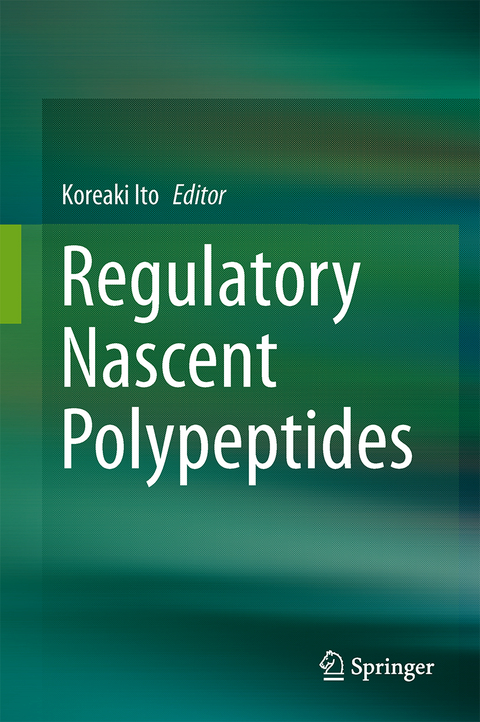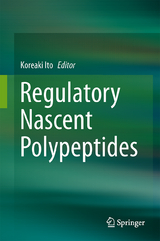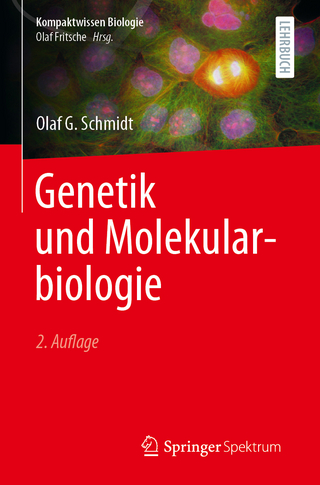Regulatory Nascent Polypeptides
Springer Verlag, Japan
978-4-431-55051-8 (ISBN)
Koreaki Ito, Senior Research Fellow, Kyoto Sangyo University
(1) Introduction 1. Biological significance of divergent sequences that stall the ribosome Koreaki Ito (Professor, Kyoto Sangyo University, Japan) and Shinobu Chiba (Assistant Professor, Kyoto Sangyo University, Japan) (2) The ribosomal tunnel 2. Structural basis for the exit tunnel-nascent chain interactions Roland Beckmann (Professor, Gene Center and Department of Biochemistry, Ludwig-Maximilians-Universität München, Germany) 3. Biochemical and biophysical properties of the ribosomal exit tunnel Carol Deutsch (Professor, Department of Physiology, University of Pennsylvania School of Medicine, USA) (3) Regulatory nascent chains sensing metabolites and drugs 4. Ribosomal stalling by TnaC, a tryptophan-sensing nascent chain Luis Rogelio Cruz-Vera (Assistant Professor, Department of Biological Sciences, University of Alabama in Huntsvill, USA. 5. Ribosomal stalling by antibiotic-sensing leader peptides that regulate antibiotic-resistance genes Alexander Mankin (Professor, Center for Pharmaceutical Biotechnology, University of Illinois at Chicago, USA.) 6. Ribosome stalling by the fungal arginine attenuator peptide Matthew S. Sachs (Professor, Texas A & M University) 7. Ribosome stalling by S-adenosyl methionine-sensing nascent peptide in plants Satoshi Naito (Professor, Hokkaido University. Japan) (4) Elongation-arresting nascent chains and translocation sensing 8. Amino acid motifs that induce elongation pausing Allen Buskirk (Department of Chemistry and Biochemistry, Brigham Young University, USA) 9. SecM as an elongation arresting nascent chain that senses and regulates protein export activity Koreaki Ito (Professor, Kyoto Sangyo University, Japan) 10. Translocation sensing by SecM Harris Bernstein (Senior Investigator, NIDDK, National Institutes of Health. USA) 11. MifM as an elongation arresting nascent chain that senses and regulates cellular activity of protein insertion into the membrane Shinobu Chiba (Assistant Professor, Kyoto Sangyo University, Japan) 12. Arrest-releasing forces generated by partition into the lipid phase of the membrane Gunnar von Heijne (Professor, Center for Biomembrane Research, Stockholm University, Sweden) 13. Nascent chain mediated localization of mRNA on the endoplasmic reticulum as an important step of unfolded protein response Kenji Kohno (Professor, Nara Institute of Science and Technology, Japan) 14. Co-translational recruitment of a targeting factor to the ribosome Ramanujan Hegde (Group Leader, MRC Laboratory of Molecular Biology, UK) 15. Signaling from within the ribosome Arthur E. Johnson (Professor, Texas A&M University, USA)
| Zusatzinfo | 62 Illustrations, color; 13 Illustrations, black and white; IX, 315 p. 75 illus., 62 illus. in color. |
|---|---|
| Verlagsort | Tokyo |
| Sprache | englisch |
| Maße | 155 x 235 mm |
| Themenwelt | Studium ► 2. Studienabschnitt (Klinik) ► Humangenetik |
| Naturwissenschaften ► Biologie ► Biochemie | |
| Naturwissenschaften ► Biologie ► Zellbiologie | |
| ISBN-10 | 4-431-55051-8 / 4431550518 |
| ISBN-13 | 978-4-431-55051-8 / 9784431550518 |
| Zustand | Neuware |
| Haben Sie eine Frage zum Produkt? |
aus dem Bereich




